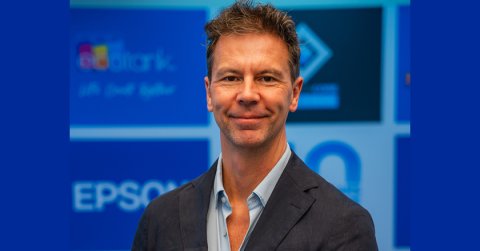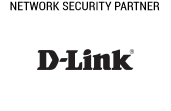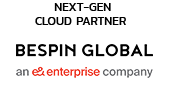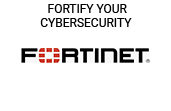
Veronica Martin spoke to Neil Colquhoun, President at Epson META-CW Asia, during GITEX 2025 about how Epson is evolving enterprise solutions to support digital transformation, hybrid learning, and eco-efficient printing across government, corporate, and education sectors.
How is Epson evolving its enterprise solutions to support digital transformation across government and corporate sectors?
As you know, we’ve been involved in enterprise for a long time. I’d say it’s ongoing, and specifically at the moment, we’re expanding our range of enterprise printing to align with digital transformation. Our printers, of course, print – but they also scan, include digitisation software, and interact with external systems.
Effectively, what we do is work closely with a customer – for example, a government entity – to understand their specific needs and then develop creative solutions. This can include everything from printing to scanning technology and addressing questions about digitisation and the so-called paperless office. Even in highly modern economies like the UAE, there’s still a need for white signatures, so printing remains essential.
From Epson’s perspective, our goal is to print in an economical and environmentally friendly way. Our technology is different from most of the industry. While many printers use laser technology, ours is based on Epson’s proprietary Micro Piezo inkjet technology, which is heat-free. What does that mean? It means we can print using up to 90% less power consumption. Multiply that across a city, a country, or even a region, and the savings are significant.
We achieve this because there’s no heat inside the printer. So, we’re not just answering the technology question; you’re also getting compact, precise engineering designed with ecological and economic reasons in mind.
What new workplace technologies or eco-efficient printing solutions are you showcasing at GITEX 2025 for enterprise clients?
We have the latest range of high-speed printers for centralised document printing – that means up to 100 pages per minute – but we also offer a range of smaller desktop printers. We understand that some companies prefer not to have centralised printing for confidentiality reasons. For example, a management suite might require localised printing. So, we provide solutions ranging from the smallest desktop printers to the largest enterprise machines.
Our inkjet technology is heat-free, which comes with a big advantage: fast first-page output. With a laser printer, you often have to wait for the machine to warm up, sometimes for hours. With our heat-free technology, you simply press print, and the page comes out almost instantly. That’s extremely valuable because time is money – and the best technology today is technology that saves time. Think of Amazon Prime, or Netflix without ads. It’s all about speed and convenience.
We listen carefully to our customers: they want compact, efficient, low-cost printing that’s also fast. That’s exactly what this new range delivers – the fastest first-page output on the market.
Beyond printing, we also provide advanced scanning technology and solutions for commercial printing. The needs differ depending on the enterprise: a typical financial district office may only require centralised and localised printing. But other industries, like fashion or merchandising, might need sublimation printing – that means printing directly onto mugs, t-shirts, or other products. We offer technology to support that as well, covering the full spectrum of enterprise printing needs.
How is Epson helping educational institutions enhance hybrid learning environments through projection and collaboration tools?
Education is one of our most significant markets, and we’ve been No.1 in projectors globally since 2001. We have a number of large education agreements across the Middle East, Africa, Turkey, and Central West Asia, which is our region. The reason schools choose projectors over flat panels is primarily size. Flat panels are popular at home, so people often wonder why they wouldn’t work in the classroom. The challenge is visibility: from the back of the classroom, a flat panel just doesn’t deliver. Our projectors, however, can easily reach 120 to 150 inches (almost double the size of most flat panels) providing much more impact and engagement in learning.
We also provide printing solutions for schools. While this may not be as common in the GCC, in many of our regional markets, educators don’t want children to stare at tablets all day. There’s growing concern about screen time, yet classrooms often assume digital is the default. A hybrid approach works best: our printing technology allows teachers to print assignments or homework for students to complete offline. In some countries, schools are moving away from annual textbooks – lessons are partially digitised, but homework is printed, completed, and returned for marking.
While the UAE may be more fully digitised, many of our markets are still emerging, so our solutions help bridge the gap between digital and traditional learning methods.
With governments driving paperless and smarter office initiatives, how is Epson adapting its product strategy to stay relevant?
I think we need to view this from a broader perspective. Living in the UAE, we’re in an incredibly digitised and well-connected environment. For example, the UAE Smart Pass is extremely useful, and I was even using it to pay for parking yesterday.
The world outside the UAE isn’t necessarily as advanced, though. There’s still a long way to go. For example, Epson Middle East was only recently incorporated as a Dubai-based company last year, and a lot of our processes still relied on wet signatures. While we use solutions like DocuSign, there’s still a need for both digital and physical workflows.
We’re able to support digitisation through our scanning technology and visual solutions; helping customers visualise documents without needing a physical copy. Nonetheless, printing remains necessary in many contexts. From our perspective, we don’t need the print market to grow; we’re not concerned about decline. Our focus is on taking market share from competitors by offering better solutions.
Our technology is Epson’s Micro Piezo inkjet, heat-free and highly efficient. One key benefit of heat-free technology is low maintenance, so our customers see the benefits of lower energy costs, lower running costs, and reliable performance.
Epson can be part of the digitisation journey through scanning, while ensuring that when printing is needed, it’s productive, low-maintenance, cost-efficient, and reliable – all designed to make life easier for the customer.
What role do regional partnerships and channel strategies play in strengthening Epson’s presence in the Middle East?
It’s extremely important for us because, generally speaking, customers don’t just buy products; they buy solutions. Epson manufactures high-quality products, but from a customer’s perspective, what they really need is a complete solution. That’s why we work closely with our channel partners to deliver tailored solutions that meet customer needs.
Our selection of channel partners is therefore critical. Like many companies, we have a system of gold, silver, and platinum partners – but these aren’t just labels. They represent the quality and capability of our partners. To become a top Epson partner, you must meet strict criteria, covering wholesale, pre-sales, and the entire customer lifecycle. These partnerships are absolutely vital to our success.
It’s also important to note that we are a Dubai-based company, not a branch of Epson Europe. Epson Middle East is a fully incorporated company in Dubai, with 130 employees locally, and an office in Saudi Arabia that complies with local regulations. Being local is a key factor in partner selection and market approach.
Customers choose Epson not just for our products, but because we are a local company that can engage as a true partner; we’re truly working together to approach the market in the most effective way.
Image Credit: Epson





